Brick Tactical – Featured Customer
How and when did you learn how to operate CNC machines?
Flashback to 2012, I was 12 years old. I was doing YouTube for 2 years at this point and loved custom LEGO accessories and parts. I knew more than the average twelve-year-old on how they were made, but that wasn’t enough, I wanted to make my own. There were companies out there at the time making third-party LEGO accessories, but not what I wanted. I turned to my right-hand man, my grandpa, with any wild project I could think of. My grandpa was a mechanical engineer and manufactured products that required injection molding. By no means did we know a single thing. We both knew that you needed a mold and hot plastic was pushed into the mold, that’s about it. After doing some research, watching YouTube videos. I saw the Taig Desktop CNC and I knew I had to have it. At the time gathering $2,000 for a twelve-year-old was A LOT. I did anything I could to make a few bucks selling some old LEGO sets and hustling. We got the money and we got the machine.
There was this exciting moment of assembling it and getting to manually jog the machine around and see it move. Another moment that my grandpa and I had, where we just looked at each other like “now what”. You have to keep in mind, we didn’t know what an endmill, CAD/CAM, or even a parallel was. It took about a year of phone calls, YouTube videos, and learning to finally start making usable injection molds. My grandpa would be calling tool reps during business hours and writing down everything he learned. While I would go to school and design molds in my head and on my homework in class. Then we would meet up frequently and exchange knowledge and ideas, and then test it out on the machine.
What struggles did you encounter when you first started learning?
At the time learning all the terminology was difficult. The main thing we had to learn was the difference between an end mill and a ball mill. Sounds silly right? I know pretty pathetic. But making injection molds with nice 3d surfaces we kept getting “stair-step” tool paths and we couldn’t figure it out. Eventually, we realized what the benefits of both were. Back then another concept we both had to wrap our heads around was the concept of a thou. We as machinists have this idea in our heads of what .001″ is. That took some time to get the hang of. Lastly, in 2016 (at sixteen years old) I decided to start going to college for machining. I went to Lake Washington Institute of Technology, my local technical school. I graduated with my AA in Machine Technology and my High school diploma in 2018 when I turned 18. After going through school getting a more formal education on machining, I was hooked! It made me realize my drive for more accurate parts and tolerances. My desktop machine wasn’t enough. In 2018, I bought a Haas DM2 which was a HUGE deal at the time. I paid in cash for this machine. Worked on my company through the previous years. Invested money on the side, and also took on a second job as a CNC programmer. This allowed me to stash all the money away for this purchase. Being able to lean on the Z column of my machine and watch an indicator move .010″ was no longer an issue. I was set.
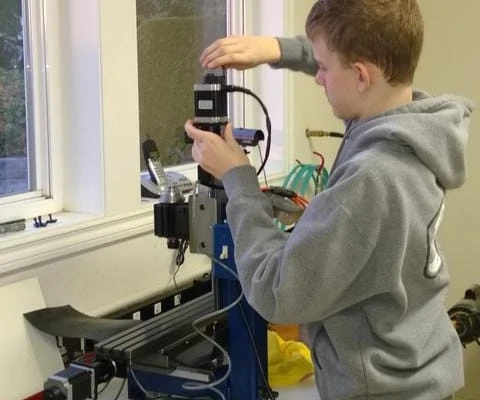
Where did your passion for Lego’s and Lego bricks come from?
As a kid, I was always around LEGO. Starting at age 5 I got my first LEGO Star Wars set, which I still have to this day. Ever since then I always loved the brick system. Being able to have FULL creative control is something I latched onto early on in my childhood. The rest is history. It turned from a childhood toy, into a hobby, into a small business, now into a real company. It’s crazy to think almost 12 years ago I was a ten-year-old kid starting my YouTube channel, clonetrooperx39. Now going into 2022 I’m looking to hire my first employee at twenty-one years old.
What’s your favorite Lego build you have ever made?
My favorite MOC (My Own Creation) has to be a World War II DDAY recreation. I build this over the course of ten months on my YouTube channel. In this series I started from scratch, looking at historical photos and documents of the world-famous battle known as DDAY. From there I started with some blank LEGO baseplates and got to work. Doing layout work, rock structures, bunkers, tanks, custom printed mini-figures the whole nine yards. Being a total history nerd, this is by FAR my favorite build. It was one of my favorite battles to study growing up in school.

What sets Brick Tactical apart from the rest of the competition?
BrickTactical is all American and I’m very proud of that. We manufacture everything in the United States. A few products I have injection molds for that are too large to run on my current machines, but I have a local Washington state company run them. With BrickTactical you’re not only getting quality products from people who care but you are supporting my story. BrickTactical is very passionate about what we do. We take serious pride in the attention to detail and quality we withhold. Most of the competitors in the custom LEGO accessory world produce all their products overseas. There is nothing wrong with that. I rather do it here and support my friends and family with work along with controlling all the quality myself.
Can you explain the process of creating a custom Lego brick or accessory?
Creating a new custom LEGO weapon/accessory is no easy task. Start off with the idea. Once I have an idea of an item I want to scale down and make into a LEGO mini-figure scale then I get a file designed of that part to scale. Sometimes I do this myself, other times I have one of my designers take care of that. Once I get the file, I normally do a high-resolution SLA 3D print of the part to make sure everything looks and feels right in the mini-figures hand. I might send pictures back and forth with my designer and make changes. This process can take a few weeks to many months depending on the part. Then I take the part file, and I start designing the injection mold. Once designed I program the mold myself and machine it out on my CNC mill. Machining the molds can take many hours, sometimes up to 48 hours straight of machining time to cut the cavities. Then it goes into the molding machine, and we start testing. Sometimes you can get to this step and find a problem and have to repeat this entire process. I do it more than I’m willing to admit, simply because I really care about the little things, some of the things NOBODY would EVER notice, but I notice, so it needs to be fixed. Period. If all is well then it goes into production, and we start cranking them out. The last step is to take photos to list them on the website and promote it!
What current product offerings do you have?
BrickTactical has well over 750+ products currently on the website. We are making dozens every month and plan to ramp up even more in 2022. We offer everything from custom injection-molded weapons/accessories or custom printed genuine LEGO parts with our own designs on mini-figures to create accurate representations of soldiers, video game characters, or movie characters from all time periods.
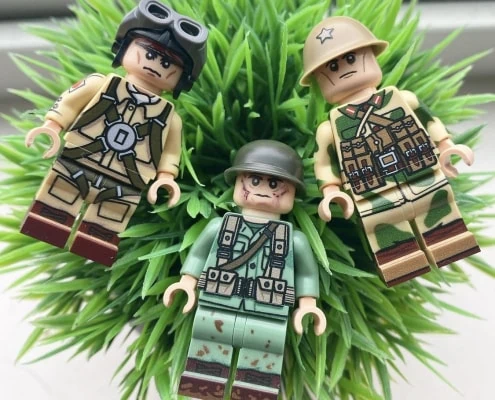
What sort of machines do you use in your shop?
Currently, we have our main Haas DM2 CNC mill along with our injection molding machines and UV printer. In 2022 we plan to add more UV printers, a robot arm for machine tending, and a 5th axis machine for more complex parts.
Which materials do you most often work with in your shop?
The most common materials that I work with are Aluminum and ABS plastic. Making molds almost every day and then running through the injection molding machines I have are the two materials I’ve gotten to know very well. I also have to occasionally modify steel molds, or make tooling and fixtures out of other materials. But who doesn’t like aluminum! Strong, lightweight, and fast to the machine! Not to mention a LOT cheaper than EDM cutting steel molds.

What is the coolest project you have worked on?
During the early stages of the pandemic, there was a huge need for face shields to protect health care workers. This was an extremely rushed situation, myself, another local machinist, and YouTuber John SL, worked together to fix this. John designed the face shield frame and I took care of the rest. I designed a full injection mold, machined it, and was making parts in less than 10 days. We made around 4,000 of these frames and donated them all to local workers. I always try to do the right thing where I can, this just felt right and I learned a lot from doing it.
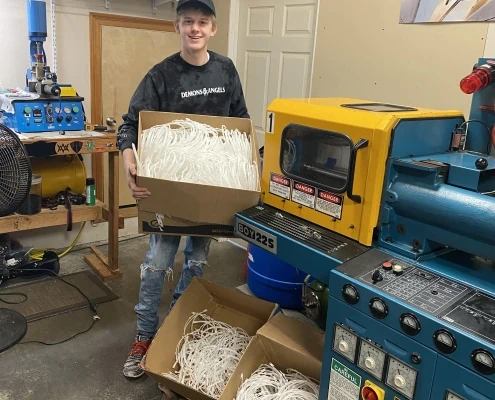
Why is high quality tool performance important to you?
High-quality tools are very crucial to making high-quality injection molds. They go hand and hand. Being a solo entrepreneur I also don’t have the time to check lower grade tooling to make sure it’s up to my standards of run out, sharpness, etc. Buying from high-quality tooling companies takes those variables out of the equation. Also having speeds and feeds ready to go when buying new tools saves time and broken tools. It at least gives me a baseline of where to start playing with my numbers.
What is your favorite project you have worked on?
Once I got my Haas DM2 I knew I could make better injection molds. But I also was eager to make some other parts for companies and see how a job shop truly functions. Also, to be blunt I wanted to make some money! After blowing all that cash upfront on a machine my bank account could use it! I found some local customers through word of mouth and started making some small, complex, six-set-up parts on my 3 axis machine. Truth be told after doing work for this company for almost a year they later told me all the parts I had made went on the dashboards of Black Hawk Helicopters. That blew me away being a totally military nerd. That was pretty cool. It was also pretty rad when I’m working with the engineers at this company giving them feedback on how they could modify their designs to make them more machine friendly. Being eighteen years old talking to seasoned engineers, more or less changing THEIR parts, looking back on it was pretty bold.
One time I did a large batch of parts for this company, numerous part numbers, thousands of dimensions that they had to inspect each and everyone due to these being aerospace parts. I remember the head engineer came over to my parent’s house where I have my shop and he told me that every, single, part was perfect and that he hadn’t seen a success rate like that in all 30+ years of him doing this. There I was an 18-year-old fresh out of school, full-time working for myself crushing it.
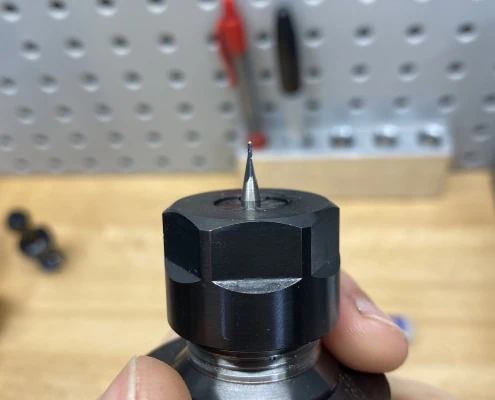
What is your favorite part of your job?
Having ultimate creative freedom is something I love. Being able to solve problems my way, fix things my way and come up with crazy ideas and products on my own time is truly one of the perks of being self-employed in manufacturing. Knowing how everything around you is made is mind-blowing but also so much fun to think about. Coming up with systems and processes to execute a task is very rewarding to me.
Is there a time that Harvey Tool or Helical Solution products came through and helped your business?
Harvey Tool and Helical cutting tools are always in my shop. The quality you get when buying is unmatched for the price. It’s really that simple. Having a local distributor driving distance away also allows me to save on shipping time. I’ve also come across crazy features on parts when doing job shop work and calling up their customer service and sending them a part file we can go over it in real-time and they always help me find that special tool that can save on my cycle time or reduce setups.
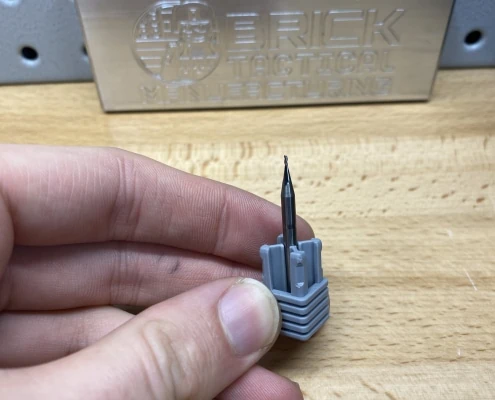
If you could give one piece of advice to a new machinist ready to take the #PlungeIntoMachining, what would it be?
Go for it! There are truly NO EXCUSES in this day and age. Even when I was learning all this, YouTube had nowhere near the amount of content on CNC machining that it does now. Back then I didn’t have Fusion 360 which is extremely powerful. If I can do it, so can you.
Is there anything else you would like to share with the In The Loupe community?
Anyone with passion and drive can do whatever you want in life. If you want to stick a CNC machine in your garage and someday have a giant shop full of machines and staff, you CAN do that. It takes time, grit, risk, and dedication, but look at me for an example. If anyone needs help with manufacturing of any kind feel free to reach out through my website or Instagram, I would be happy to help! Whether that’s trying to pick the right machine for you or even making parts for you I would love to talk!
If you want to get some kick-ass custom LEGO mini-figures and accessories feel free to check out my site BrickTactical.com or follow my Instagram @bricktactical and @bricktacticalmfg
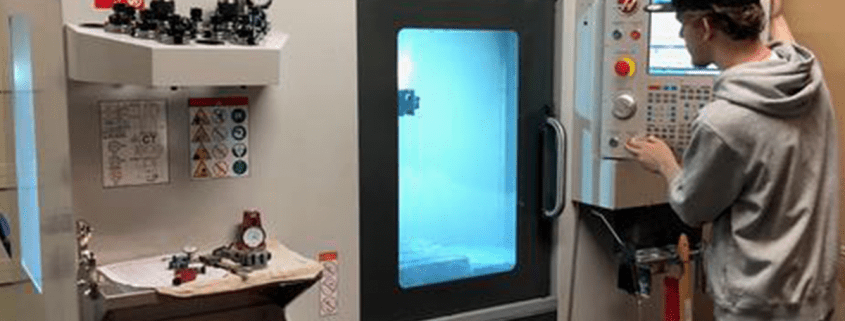

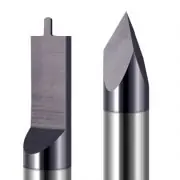
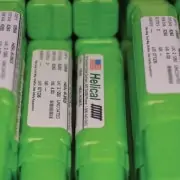
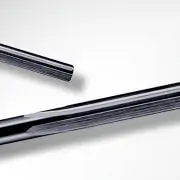

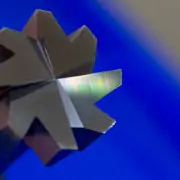
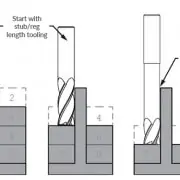
Leave a Reply
Want to join the discussion?Feel free to contribute!